Most B2B companies who publish useful guides and helpful blog posts usually don’t talk about their product or service until the conclusion, like this:

In other cases, the product doesn’t even get mentioned in passing—all a reader gets is an occasional link to a product-specific landing page, like this:

Perhaps the content teams behind these pages don’t think they are ‘allowed’ to showcase products in a blog post. Or maybe they’re afraid of coming across as too sales-y if they do. Either way, by hiding the product they end up treating it as an afterthought—which, unfortunately, invites the audience to do the same.
But there is a much more powerful alternative: product-led content.
What is product-led content? A definition
Product-led content is any type of content that strategically weaves a product into the narrative and uses it to illustrate a point, solve a problem, and/or help the audience accomplish a goal.
Think back to the two initial examples, and how a reader wouldn’t know that the company behind the writing also has a product that can help. Now take a look at this Ahrefs piece titled “Marketing funnels for beginners: a comprehensive guide:”
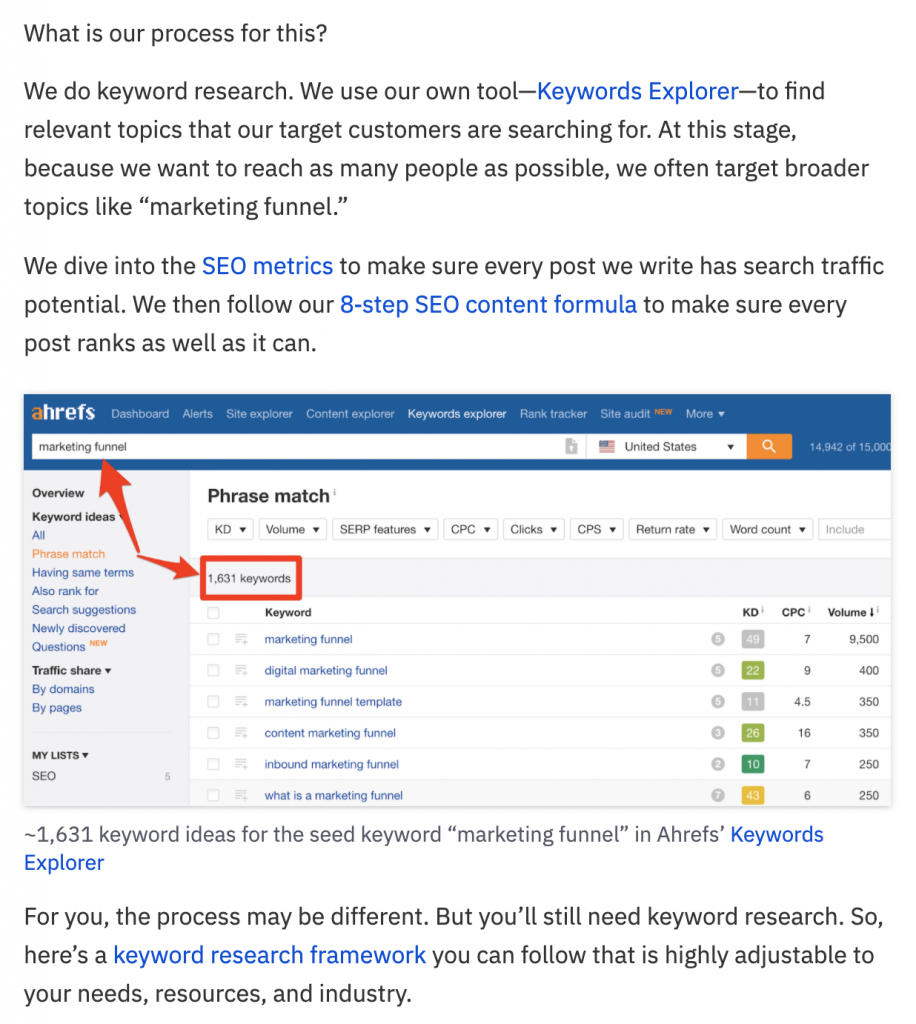
Right in the middle of the guide, there is a short explanation of how one of Ahrefs’ tools can be used to perform a specific action, with an annotated screenshot showcasing the product in action.
The same happens with this Hotjar blog post titled “Understanding and measuring your Customer Effort Score:”
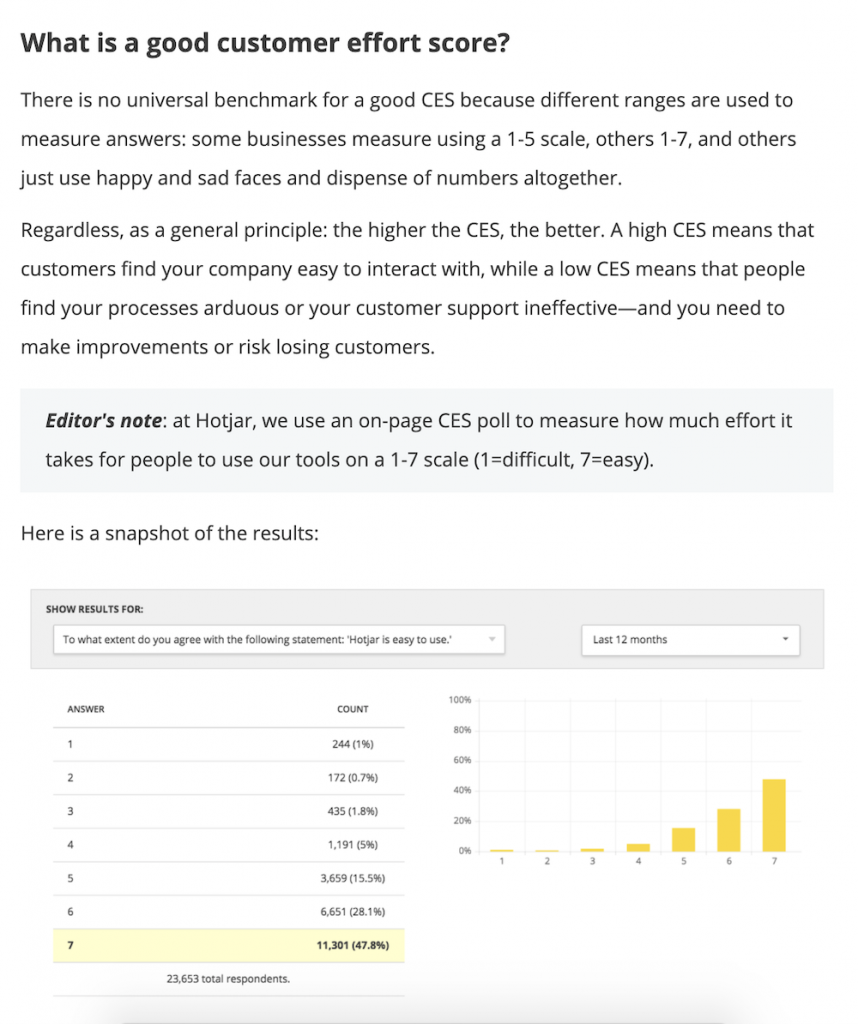
Fairly early in the piece there is a mention of how one of Hotjar’s tools can be used to measure a relevant business metric, with a screenshot from within the product showcasing what a customer would see when using it.
Similarly, in this Hotjar guide to user feedback, the reader is taught how to accomplish a specific task while a screenshot showcases the product in action:
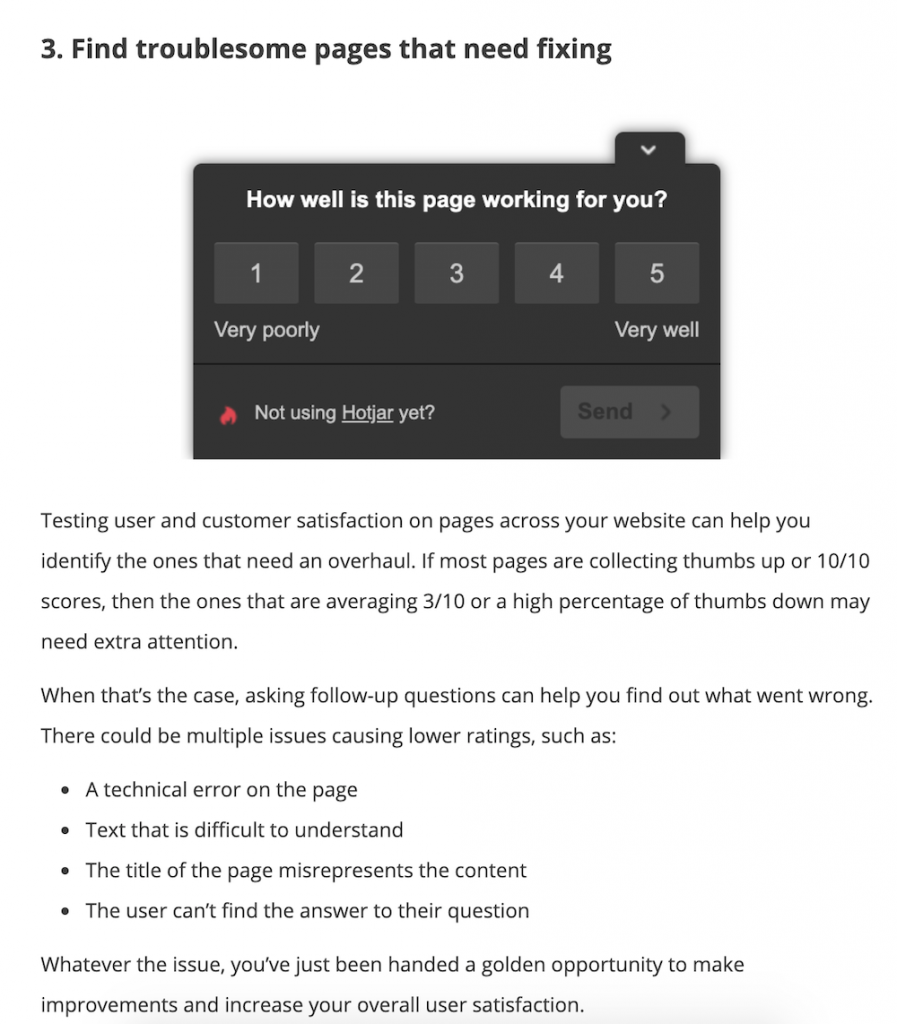
Finally, in SparkToro’s guide on how to “Shoot Your Shot: A Guide to Effective Cold Outreach” you can see see screenshots of the software in action and an explanation of how you could use it as part of your workflow:
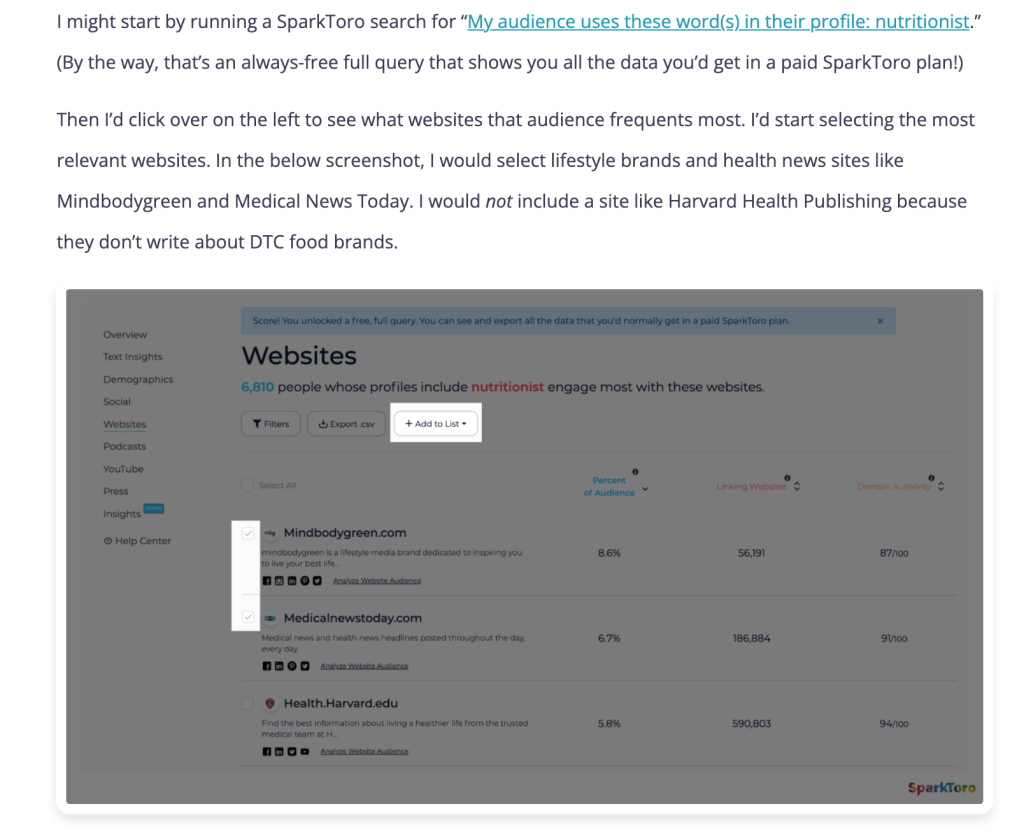
As a bonus point, the writer here also called out free SparkToro features that anybody can try w/out having to hand over a credit card.
These are all examples of product-led content. All these pieces answer the reader’s initial question or curiosity while also folding in screenshots, advice, and/or information about the product and how it can help—without breaking the flow or inserting a hard pitch.
Why is product-led content useful?
Product-led content has two distinct advantages compared to the more traditional blog posts & guides we saw in the early examples:
- It helps with acquisition → potential customers get to know your product early in their journey and, by seeing it in action, may anchor to the idea that it is the de facto solution to their problem. When the moment of conversion comes, it’s easier for somebody to convert if they are already familiar with what your product looks like and can do.
- It helps with retention → just because somebody is already a customer, doesn’t mean they are using your product/service to its full potential. Existing customers can use this type of content to keep discovering new ways of using the product and get the most out of it.
I know this for a fact because I wrote the two Hotjar pieces you saw before, and about 50+ others, following the same product-led principle 😉
How to prioritise product-led content
A good way to take a product-led approach is to start by looking at the relationship between your content ideas and the product/service you are selling. When thinking about upcoming pieces, give them a score from 0 (it makes no sense to mention the product) to 3 (the product is crucial to solving the reader’s question or help them achieve their goal):
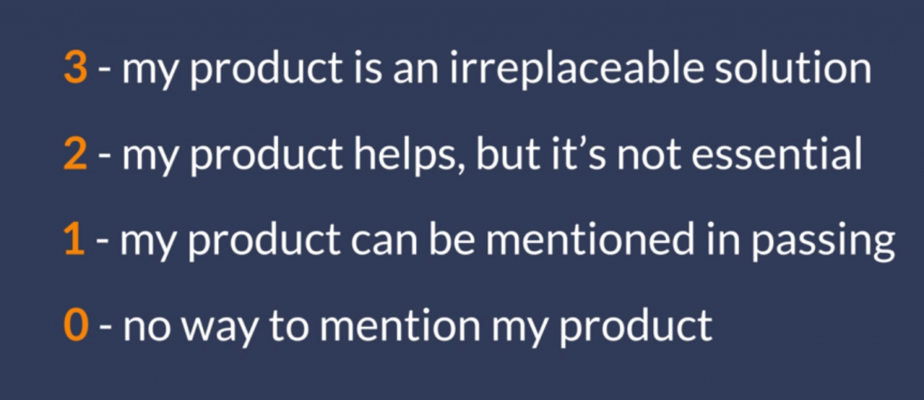
If you want your content to be product-led and have measurable business impact, you will naturally start gravitating towards topics with a score of 2 or 3.
One thing worth considering: with this model, showcasing the product in action > attracting masses of traffic. If you’re using SEO as your distribution method, you might find yourself prioritising small-volume, long-tail keywords above larger-volume ones. This is an acceptable trad-off, which you can justify as follows: what you may lose in untargeted traffic you should gain back with higher likelihood of conversions.
Product-led content resources
Product-led content is an extremely under-utilised approach that will give content teams serious competitive advantage. To know more about the what, why, and how of this approach, I recommend the following resources:
- CURIOUS → start from this list of product-led content examples
- BEGINNER → this 10-slide deck is great if all you need is a quick introduction
- BEGINNER + you like movies → this 12-slide deck uses Pixar movie Luca to give you a visual intro to the concept
- INTERMEDIATE → this 1,000-word write-up gives you an in-depth overview and a few examples
- ADVANCED + you like video → this 30-min presentation from Wynter games covers why you should be doing product-led content plus three practical methods for getting started with it
- ADVANCED + you prefer podcast → this 50-min podcast episode with the Animalz team delves a bit more into the theory and the why behind product-led content
Got questions? I have answers. I’m on LinkedIn— let’s talk 😉